
Caissa
Strong chess engine
Stars: 72
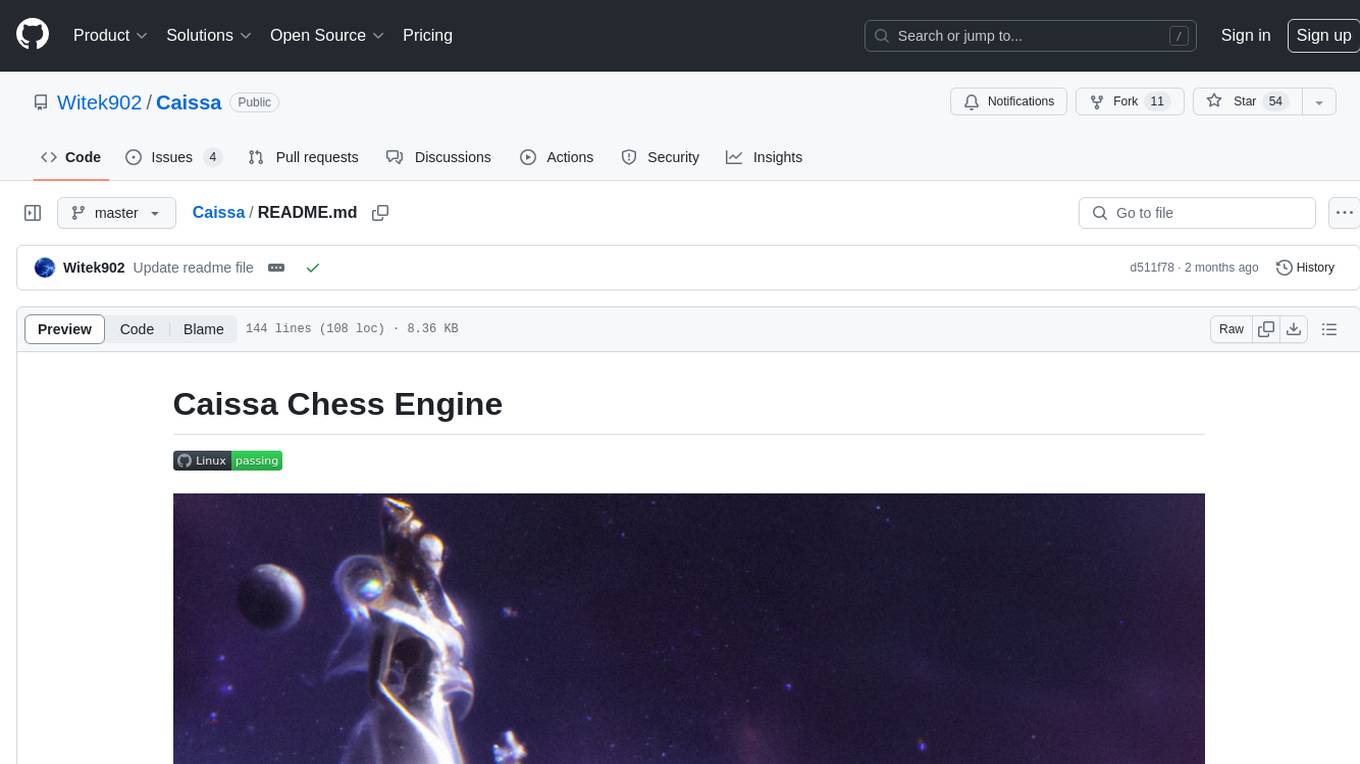
Caissa is a strong, UCI command-line chess engine optimized for regular chess, FRC, and DFRC. It features its own neural network trained with self-play games, supports various UCI options, and provides different EXE versions for different CPU architectures. The engine uses advanced search algorithms, neural network evaluation, and endgame tablebases. It offers outstanding performance in ultra-short games and is written in C++ with modules for backend, frontend, and utilities like neural network trainer and self-play data generator.
README:
(image generated with DALL·E 2)
Strong, UCI command-line chess engine, written from scratch in C++ in development since early 2021. Optimized for regular chess, FRC (Fischer Random Chess) and DFRC (Double Fischer Random Chess).
Caissa is listed on many chess engines ranking lists:
- CCRL 40/2 FRC - 3965 (#5) (version 1.17)
- CCRL Chess324 - 3701 (#5) (version 1.18)
- CCRL 40/15 - 3601 (#5) (version 1.17 4CPU)
- CCRL Blitz - 3733 (#8) (version 1.16 8CPU)
- SPCC UHO-Top15 - 3671 (#8) (version 1.18)
- IpMan Chess 10+1 (R9-7945HX) - 3496 (#13) (version 1.18 avx512)
- IpMan Chess 10+1 (i9-7980XE) - 3478 (#12) (version 1.17 avx512)
- IpMan Chess 10+1 (i9-13700H) - 3543 (#13) (version 1.18 avx2-bmi2)
- IpMan Chess 5+0 - 3381 (#28) (version 1.8)
- CEGT 40/20 - 3516 (#10) (version 1.16)
- CEGT 40/4 - 3547 (#8) (version 1.15)
- CEGT 5+3 - 3530 (#9) (version 1.13.1)
The engine has been written from the ground up. In early versions it used a simple PeSTO evaluation, which was replaced by the Stockfish NNUE for a short time. Since version 0.7, Caissa uses it's own efficiently updated neural network, trained with Caissa self-play games using a custom trainer. In a way, the first own Caissa network is based on Stockfish's network, but it was much weaker because of the small data set used back then (a few million positions). Currently (as of version 1.18) over 12 billion newly generated positions are used. Also, the old self-play games are successively purged, so that the newer networks are trained only on the most recent games generated by the most recent engine, and so on.
The runtime neural network evaluation code is located in PackedNeuralNetwork.cpp and was inspired by nnue.md document. The neural network trainer is written completely from scratch and is located in NetworkTrainer.cpp, NeuralNetwork.cpp and other NeuralNetwork* files. The trainer is purely CPU-based and is heavily optimized to take advantage of many threads and AVX instructions as well as it exploits the sparse nature of the nets.
The games are generated with the utility SelfPlay.cpp, which generates games with a fixed number of nodes/depth and saves them in a custom binary game format to save space. The opening books used are either Stefan's Pohl UHO books or DFRC openings with few random moves played at the beginning.
- Hash (int) Sets the size of the transposition table in megabytes.
- MultiPV (int) Sets the number of PV lines to search and print.
- MoveOverhead (int) Sets move overhead in milliseconds. Should be increased if the engine loses time.
- Threads (int) Sets the number of threads used for searching.
- Ponder (bool) Enables pondering.
- EvalFile (string) Neural network evaluation file.
- EvalRandomization (int) Allows introducing non-determinism and weakens the engine.
- StaticContempt (int) Static contempt value used throughout whole game.
- DynamicContempt (int) Dynamic contempt value used in the opening/middlegame stage.
- SyzygyPath (string) Semicolon-separated list of paths to Syzygy endgame tablebases.
- SyzygyProbeLimit (int) Maximum number of pieces on the board where Syzygy tablebases can be used.
- UCI_AnalyseMode (bool) Enables analysis mode: search full PV lines and disable any depth constraints.
- UCI_Chess960 (bool) Enables chess 960 mode: castling moves are printed as "king captures rook".
- UCI_ShowWDL (bool) Print win/draw/loss probabilities along with classic centipawn evaluation.
- UseSAN (bool) Enables short algebraic notation output (FIDE standard) instead of default long algebraic notation.
- ColorConsoleOutput (bool) Enables colored console output for better readability.
- AVX-512 - Fastest, requires a x64 CPU with AVX-512 instruction set support. May not be supported on consumer-grade CPUs.
- BMI2 - Fast, requires a x64 CPU with AVX2 and BMI2 instruction set support. Supported by majority of modern CPUs.
- AVX2 - Fast, requires a x64 CPU with AVX2 instruction set support. May be faster than BMI2 on some older CPUs (e.g. Intel Haswell processors).
- POPCNT - Slower, requires a x64 CPU with SSE4 and POPCNT instruction set support. For older CPUs.
- Legacy - Slowest, requires any x64 CPU. For very old x64 CPUs.
- UCI protocol
- Neural network evaluation
- Syzygy and Gaviota endgame tablebases support
- Chess960 (Fischer Random) support
- Negamax with alpha-beta pruning
- Iterative Deepening with Aspiration Windows
- Principal Variation Search (PVS)
- Quiescence Search
- Transposition Table
- Multi-PV search
- Multithreaded search via shared transposition table
- Neural network evaluation
- (5x768→1024)x2→1 architecture
- effectively updated first layer
- manually vectorized code supporting SSE2, AVX2, AVX-512 and ARM NEON instructions
- clipped-ReLU activation function
- 8 variants of last layer weights selected based on piece count
- input features: absolute piece coordinates with horizontal symmetry, 11 king buckets
- Special endgame evaluation routines
- Custom CPU-based trainer using Adam algorithm
- Heavily optimized using AVX instructions, multithreading, and exploiting sparsity of the first layer input
- Network trained on data generated purely from self-play games
- Large Pages Support for Transposition Table
- Magic Bitboards
- Handling non-standard chess positions (e.g. 64 pieces on the board, etc.)
- Outstanding performance at ultra-short games (sub-second for whole game).
The projects comprises following modules:
- backend (library) - engine's core
- frontend (executable) - UCI wrapper for the backend
- utils (executable) - various utilities, such as unit tests, neural network trainer, self-play data generator, etc.
To compile for Linux just call make in src directory:
cd src
make -j
NOTE: This will compile the default AVX2/BMI2 version.
To compile for Linux using CMake:
mkdir build
cd build
cmake -DCMAKE_BUILD_TYPE=Final ..
make -j
NOTE: Currently, the project compiles with AVX2/BMI2 support by default.
There are three configurations supported:
- Final - final version, without asserts, etc.
- Release - development version with asserts enabled and with optimizations enabled for better performance
- Debug - development version with asserts enabled and optimizations disabled
To compile for Windows, use GenerateVisualStudioSolution.bat to generate Visual Studio solution. The only tested Visual Studio version is 2022. Using CMake directly in Visual Studio was not tested.
NOTE: After compilation make sure you copy appropriate neural net file from data/neuralNets directory to location where executable file is generated (build/bin on Linux or build\bin\x64\<Configuration> on Windows).
For Tasks:
Click tags to check more tools for each tasksFor Jobs:
Alternative AI tools for Caissa
Similar Open Source Tools

Caissa
Caissa is a strong, UCI command-line chess engine optimized for regular chess, FRC, and DFRC. It features its own neural network trained with self-play games, supports various UCI options, and provides different EXE versions for different CPU architectures. The engine uses advanced search algorithms, neural network evaluation, and endgame tablebases. It offers outstanding performance in ultra-short games and is written in C++ with modules for backend, frontend, and utilities like neural network trainer and self-play data generator.
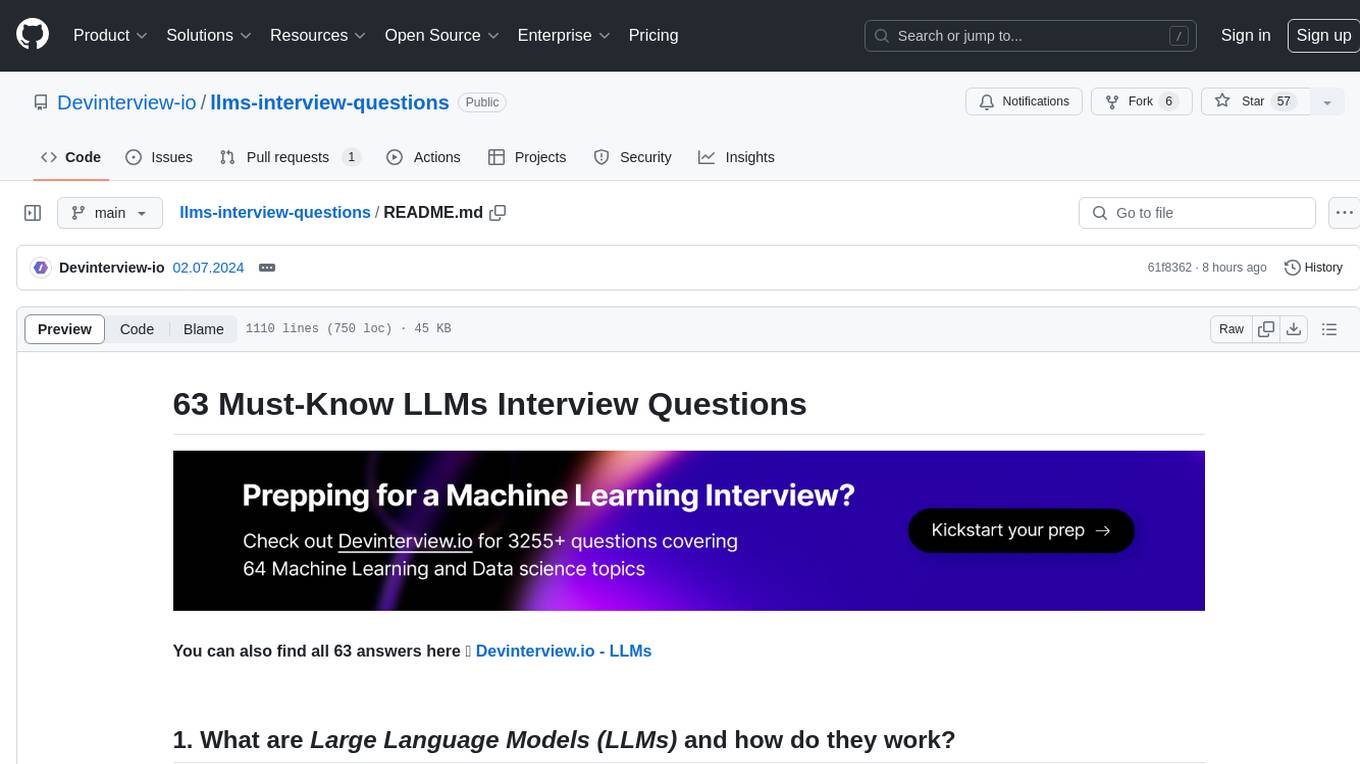
llms-interview-questions
This repository contains a comprehensive collection of 63 must-know Large Language Models (LLMs) interview questions. It covers topics such as the architecture of LLMs, transformer models, attention mechanisms, training processes, encoder-decoder frameworks, differences between LLMs and traditional statistical language models, handling context and long-term dependencies, transformers for parallelization, applications of LLMs, sentiment analysis, language translation, conversation AI, chatbots, and more. The readme provides detailed explanations, code examples, and insights into utilizing LLMs for various tasks.
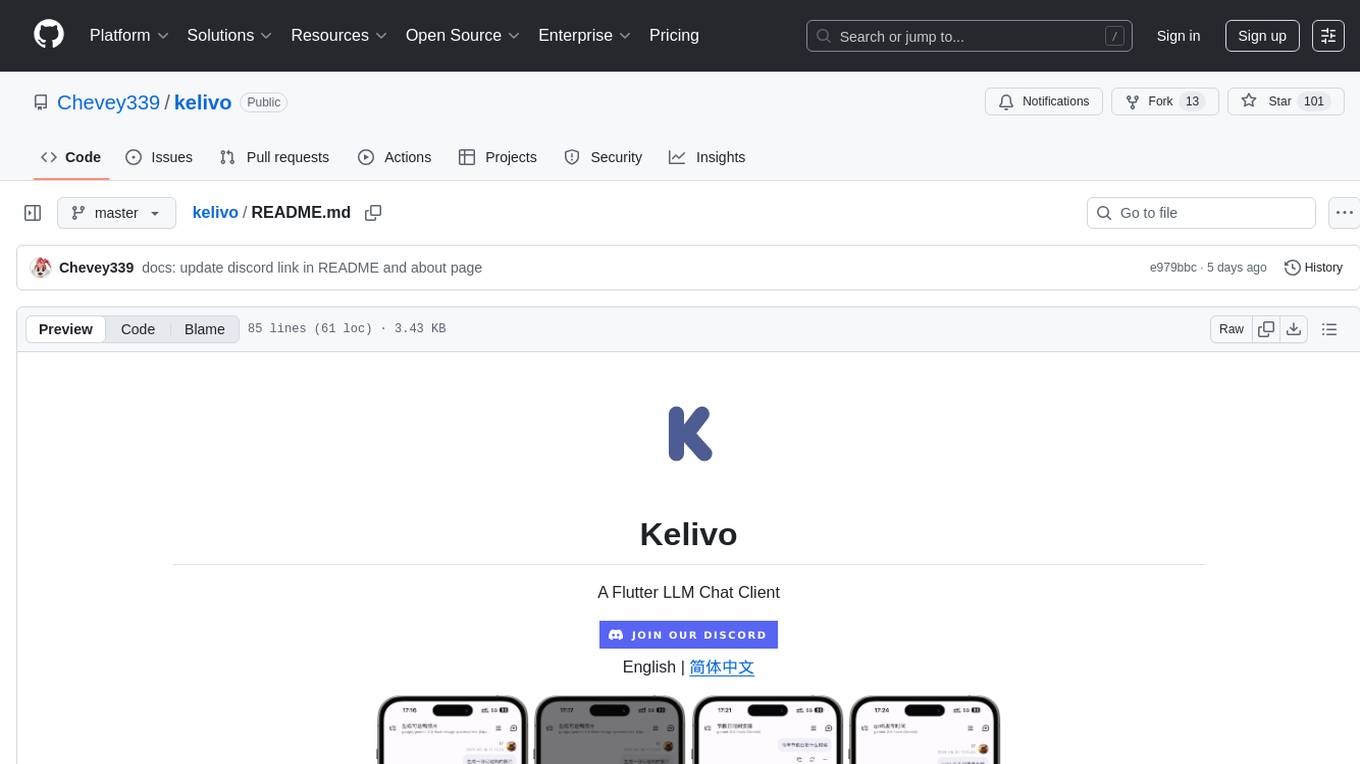
kelivo
Kelivo is a Flutter LLM Chat Client with modern design, dark mode, multi-language support, multi-provider support, custom assistants, multimodal input, markdown rendering, voice functionality, MCP support, web search integration, prompt variables, QR code sharing, data backup, and custom requests. It is built with Flutter and Dart, utilizes Provider for state management, Hive for local data storage, and supports dynamic theming and Markdown rendering. Kelivo is a versatile tool for creating and managing personalized AI assistants, supporting various input formats, and integrating with multiple search engines and AI providers.
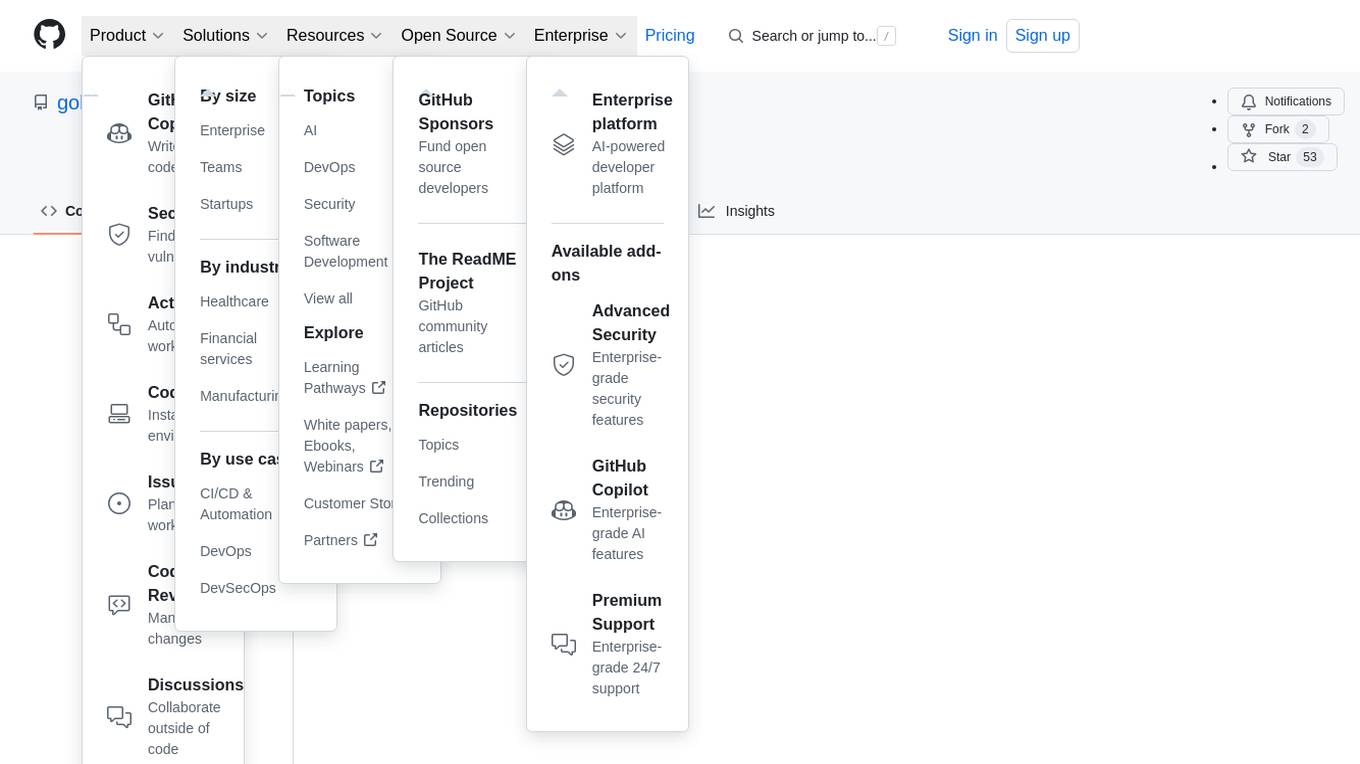
ComfyUI-fal-API
ComfyUI-fal-API is a repository containing custom nodes for using Flux models with fal API in ComfyUI. It provides nodes for image generation, video generation, language models, and vision language models. Users can easily install and configure the repository to access various nodes for different tasks such as generating images, creating videos, processing text, and understanding images. The repository also includes troubleshooting steps and is licensed under the Apache License 2.0.

PPTist
PPTist is a web-based presentation application that replicates most features of Microsoft Office PowerPoint. It supports various elements like text, images, shapes, charts, tables, videos, audio, and formulas. Users can edit and present slides directly in a web browser. It offers easy development with Vue 3.x and TypeScript, user-friendly experience with context menu and keyboard shortcuts, and feature-rich functionalities including AI-generated PPTs and mobile editing. PPTist aims to provide a desktop application-level experience for creating presentations.
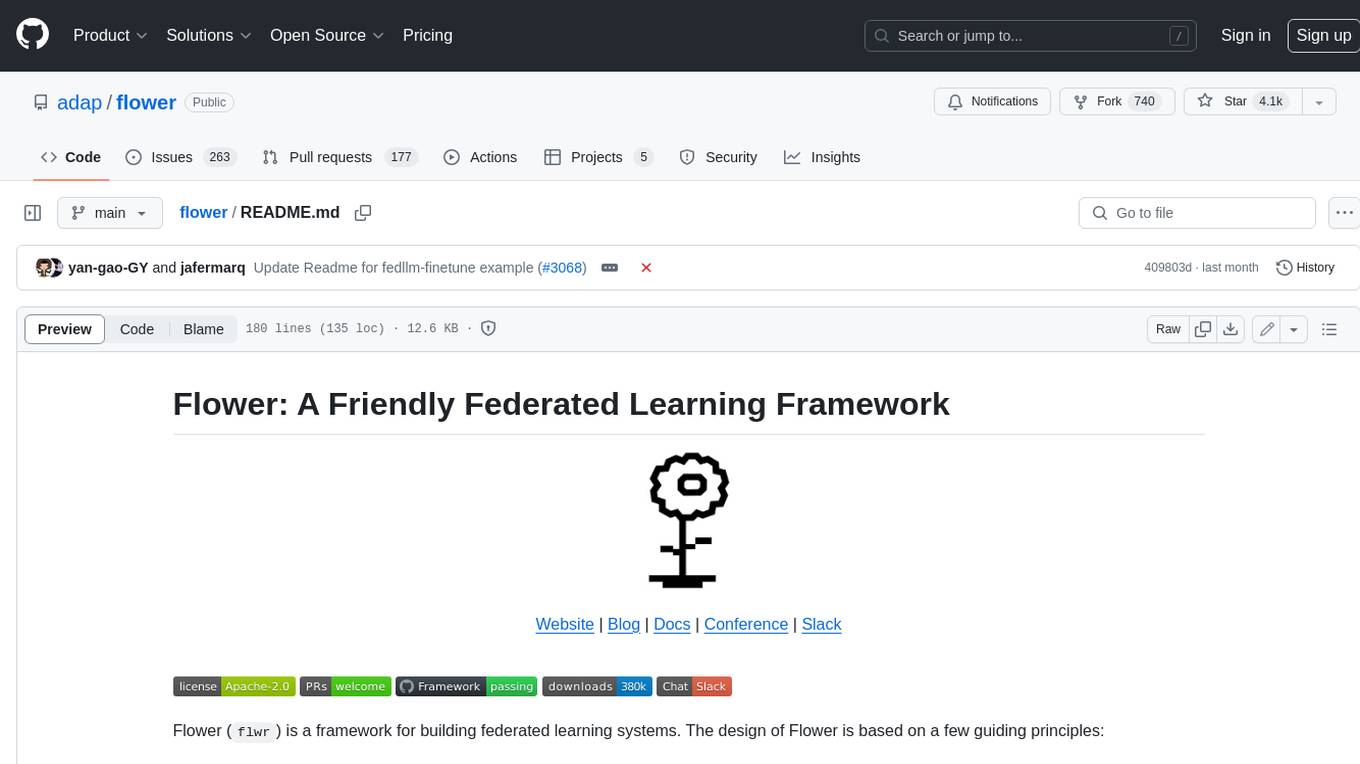
flower
Flower is a framework for building federated learning systems. It is designed to be customizable, extensible, framework-agnostic, and understandable. Flower can be used with any machine learning framework, for example, PyTorch, TensorFlow, Hugging Face Transformers, PyTorch Lightning, scikit-learn, JAX, TFLite, MONAI, fastai, MLX, XGBoost, Pandas for federated analytics, or even raw NumPy for users who enjoy computing gradients by hand.
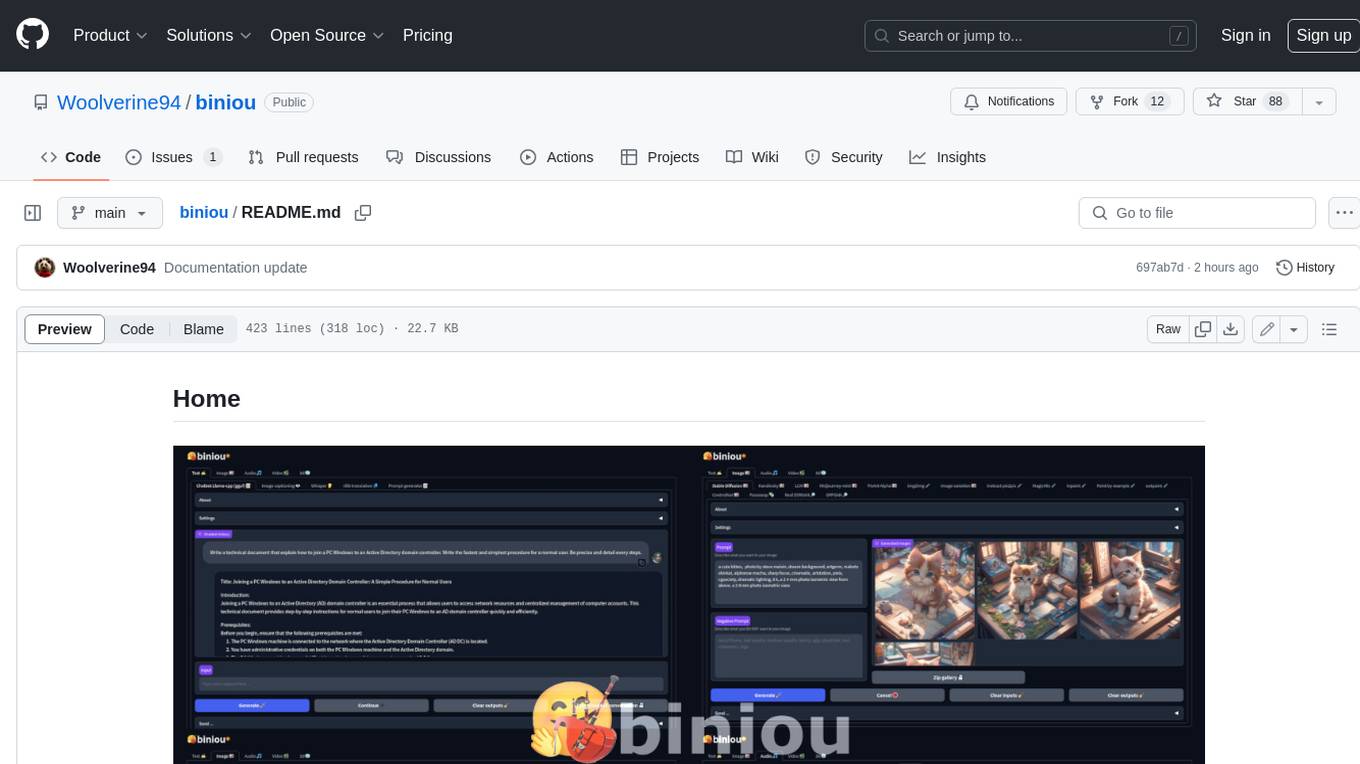
biniou
biniou is a self-hosted webui for various GenAI (generative artificial intelligence) tasks. It allows users to generate multimedia content using AI models and chatbots on their own computer, even without a dedicated GPU. The tool can work offline once deployed and required models are downloaded. It offers a wide range of features for text, image, audio, video, and 3D object generation and modification. Users can easily manage the tool through a control panel within the webui, with support for various operating systems and CUDA optimization. biniou is powered by Huggingface and Gradio, providing a cross-platform solution for AI content generation.
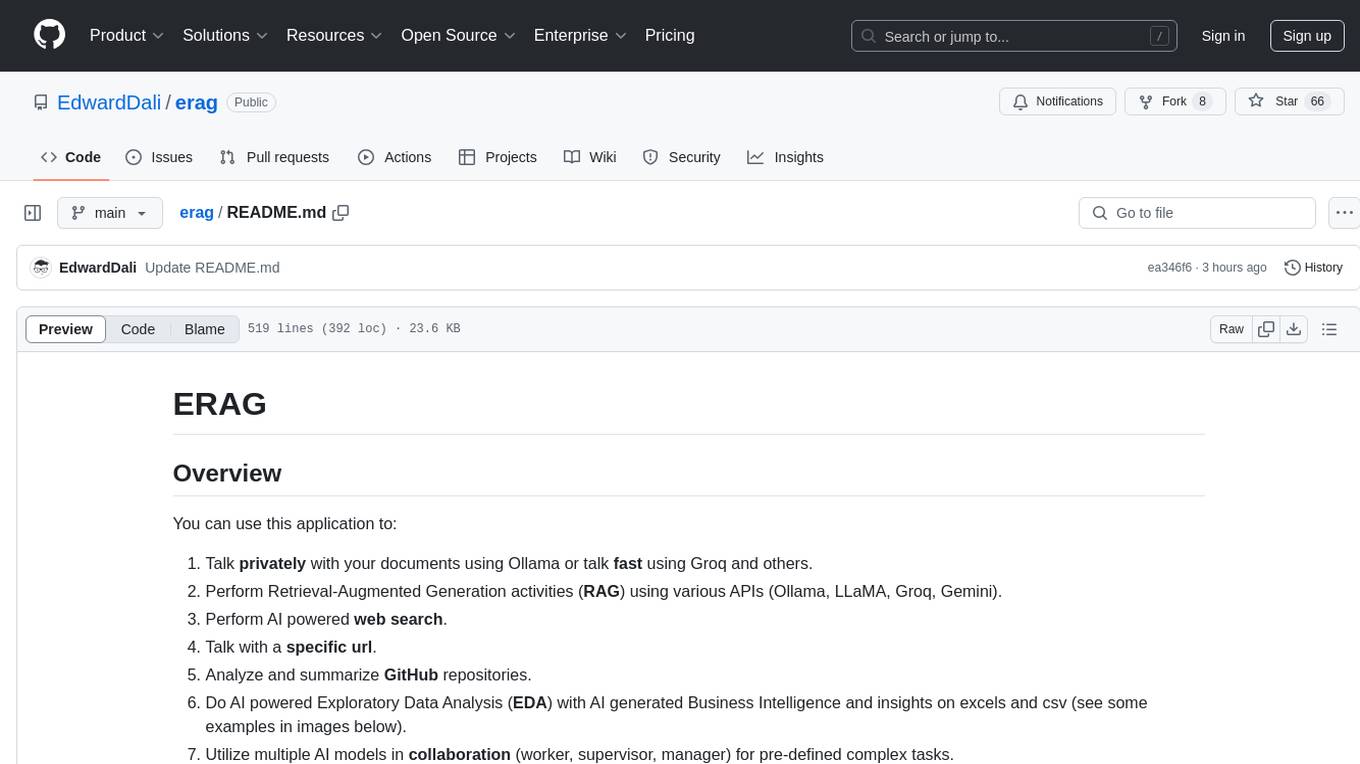
erag
ERAG is an advanced system that combines lexical, semantic, text, and knowledge graph searches with conversation context to provide accurate and contextually relevant responses. This tool processes various document types, creates embeddings, builds knowledge graphs, and uses this information to answer user queries intelligently. It includes modules for interacting with web content, GitHub repositories, and performing exploratory data analysis using various language models.
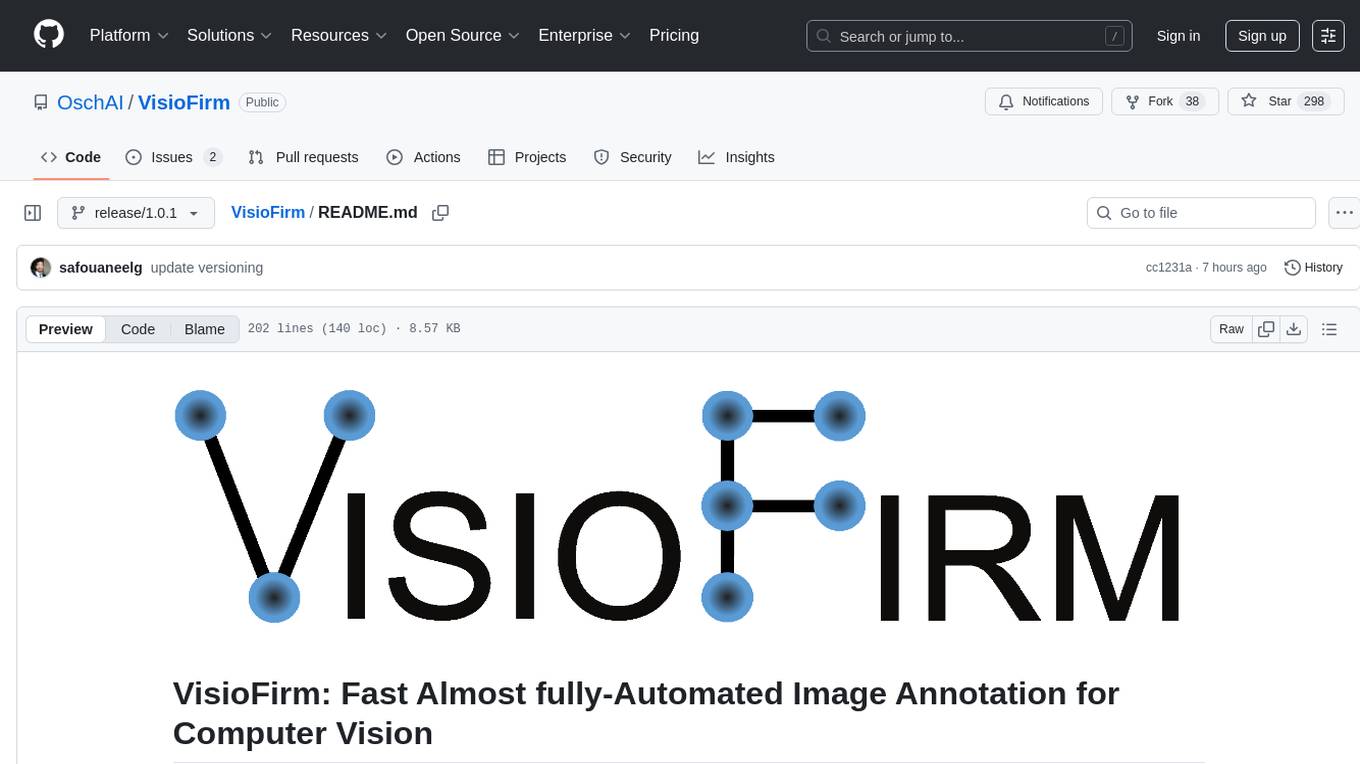
VisioFirm
VisioFirm is an open-source, AI-powered image annotation tool designed to accelerate labeling for computer vision tasks like classification, object detection, oriented bounding boxes (OBB), segmentation and video annotation. Built for speed and simplicity, it leverages state-of-the-art models for semi-automated pre-annotations, allowing you to focus on refining rather than starting from scratch. Whether you're preparing datasets for YOLO, SAM, or custom models, VisioFirm streamlines your workflow with an intuitive web interface and powerful backend. Perfect for researchers, data scientists, and ML engineers handling large image datasets—get high-quality annotations in minutes, not hours!
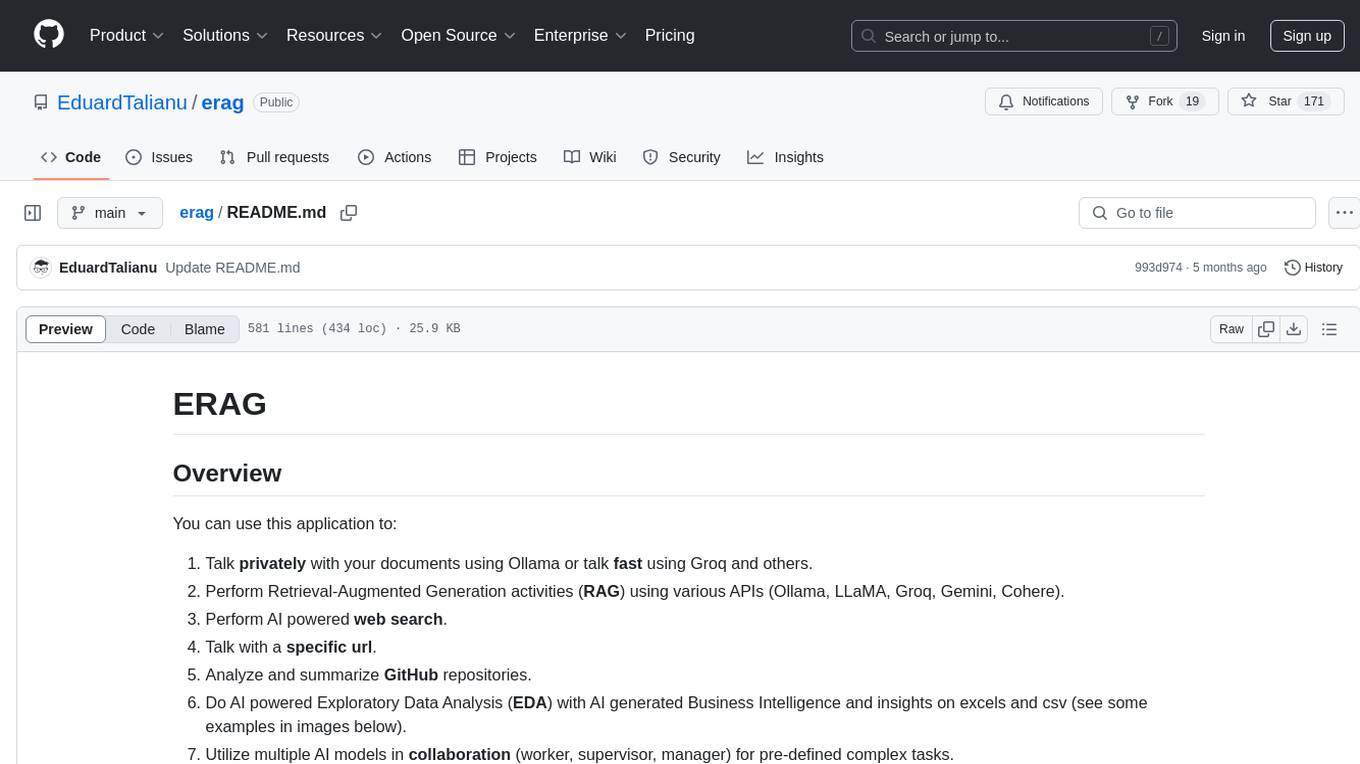
erag
ERAG is an advanced system that combines lexical, semantic, text, and knowledge graph searches with conversation context to provide accurate and contextually relevant responses. It processes various document types, creates embeddings, builds knowledge graphs, and uses this information to answer user queries intelligently. The tool includes modules for interacting with web content, GitHub repositories, and performing exploratory data analysis using various language models. It offers a GUI for managing local LLaMA.cpp servers, customizable settings, and advanced search utilities. ERAG supports multi-model collaboration, iterative knowledge refinement, automated quality assessment, and structured knowledge format enforcement. Users can generate specific knowledge entries, full-size textbooks, or datasets using AI-generated questions and answers.
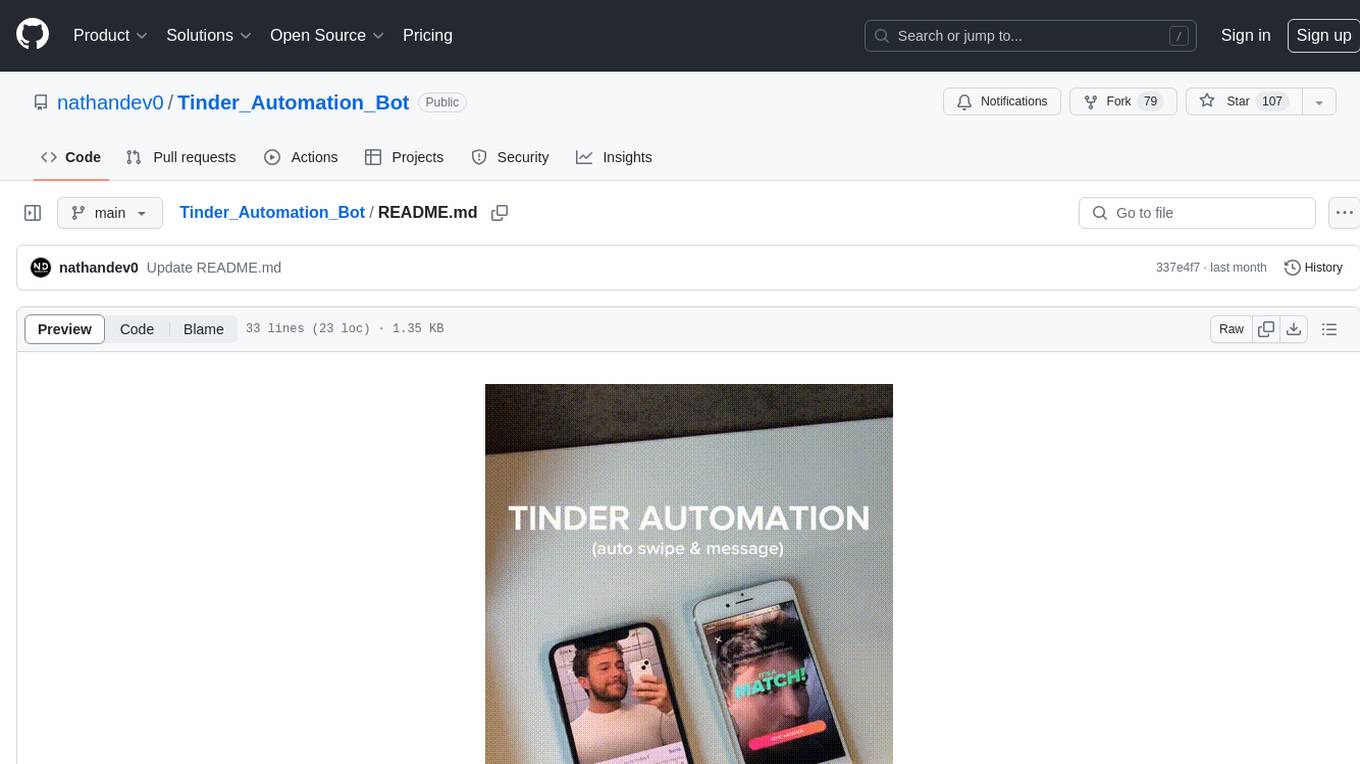
Tinder_Automation_Bot
Tinder Automation Bot is an Appium-based tool designed for automated Tinder account creation and swiping on real devices. It offers functionalities such as automated account creation and swiping, along with integrations like Crane tweak and SMSPool service. The tool also provides features like device and automation management system, anti-bot system for human behavior modeling, IP rotation system for different IP addresses, and GPS location spoofing for different GPS coordinates. It is part of a series of automation bots including TikTok, Bumble, and Badoo automation bots.
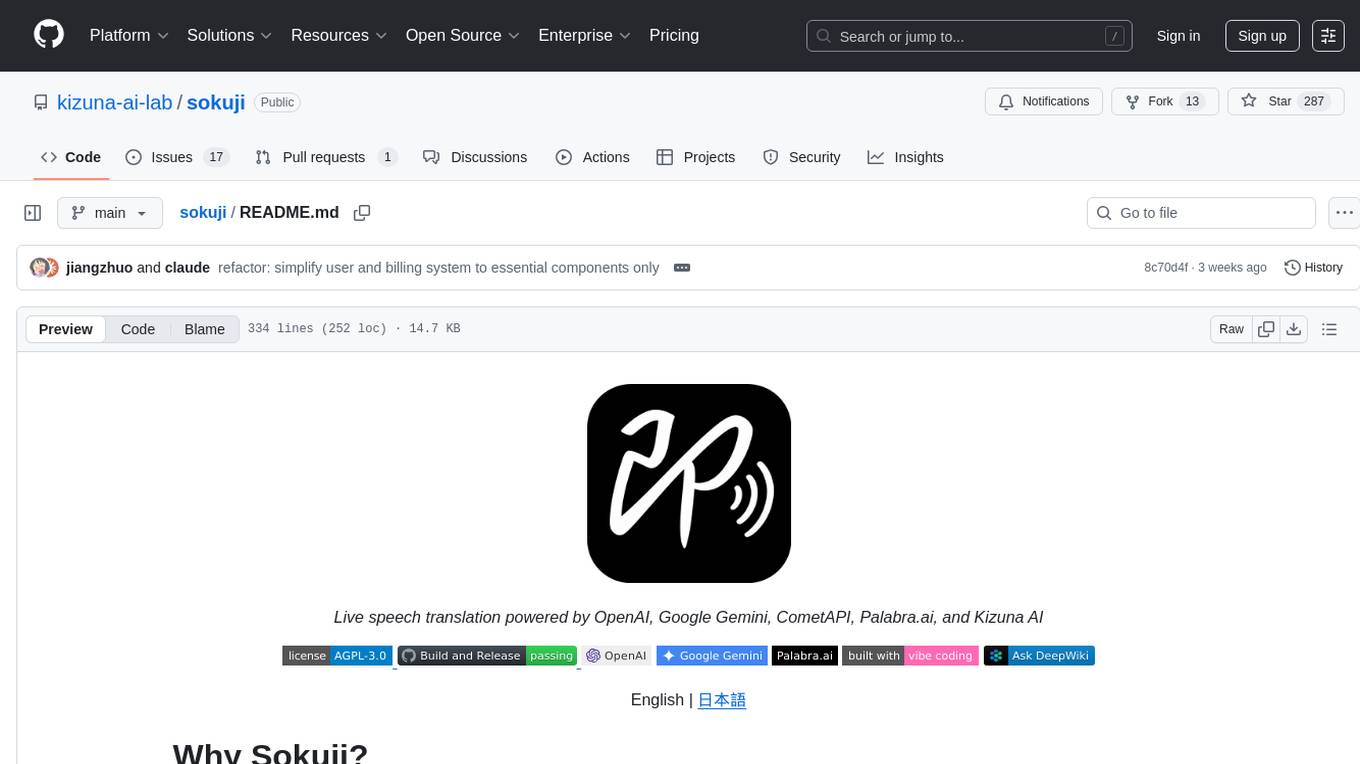
sokuji
Sokuji is a desktop application that provides live speech translation using advanced AI models from OpenAI, Google Gemini, CometAPI, Palabra.ai, and Kizuna AI. It aims to bridge language barriers in live conversations by capturing audio input, processing it through AI models, and delivering real-time translated output. The tool goes beyond basic translation by offering audio routing solutions with virtual device management (Linux only) for seamless integration with other applications. It features a modern interface with real-time audio visualization, comprehensive logging, and support for multiple AI providers and models.
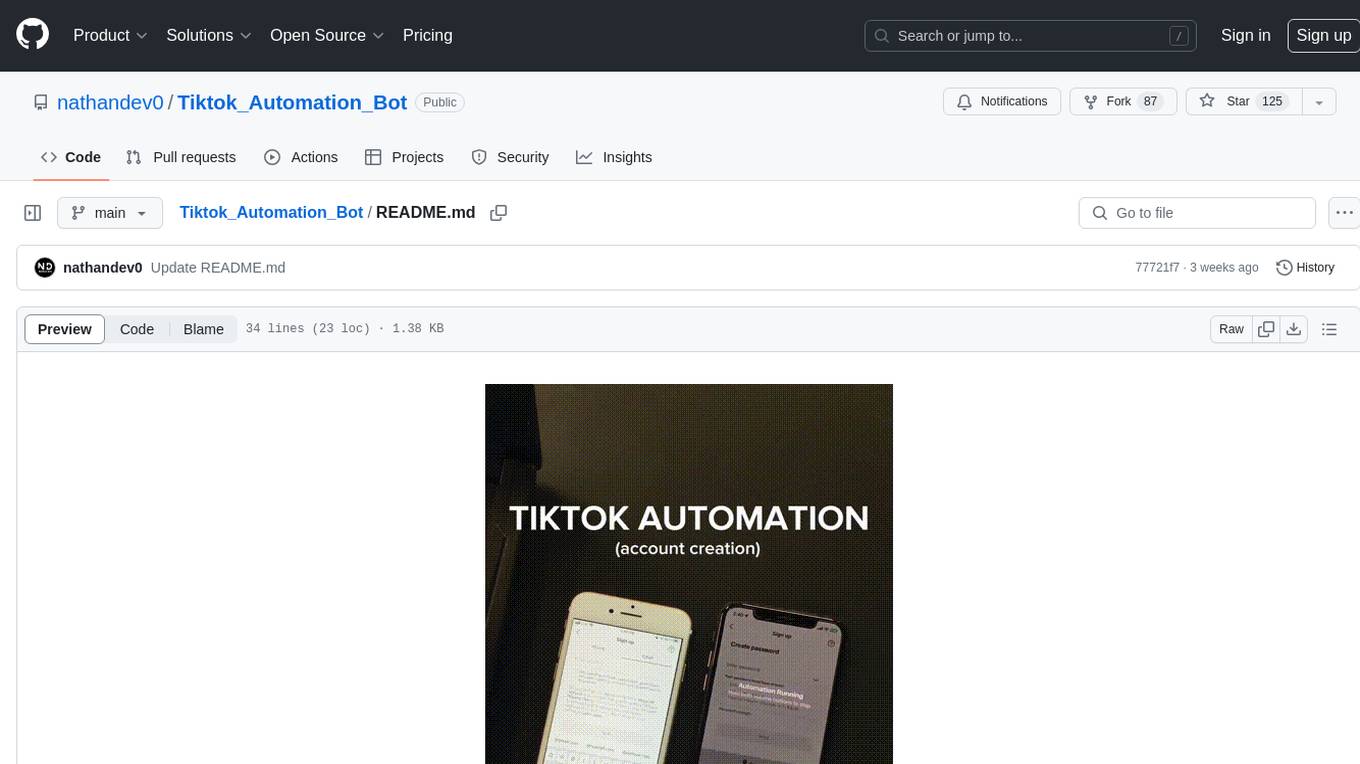
Tiktok_Automation_Bot
TikTok Automation Bot is an Appium-based tool for automating TikTok account creation and video posting on real devices. It offers functionalities such as automated account creation and video posting, along with integrations like Crane tweak, SMSActivate service, and IPQualityScore service. The tool also provides device and automation management system, anti-bot system for human behavior modeling, and IP rotation system for different IP addresses. It is designed to simplify the process of managing TikTok accounts and posting videos efficiently.
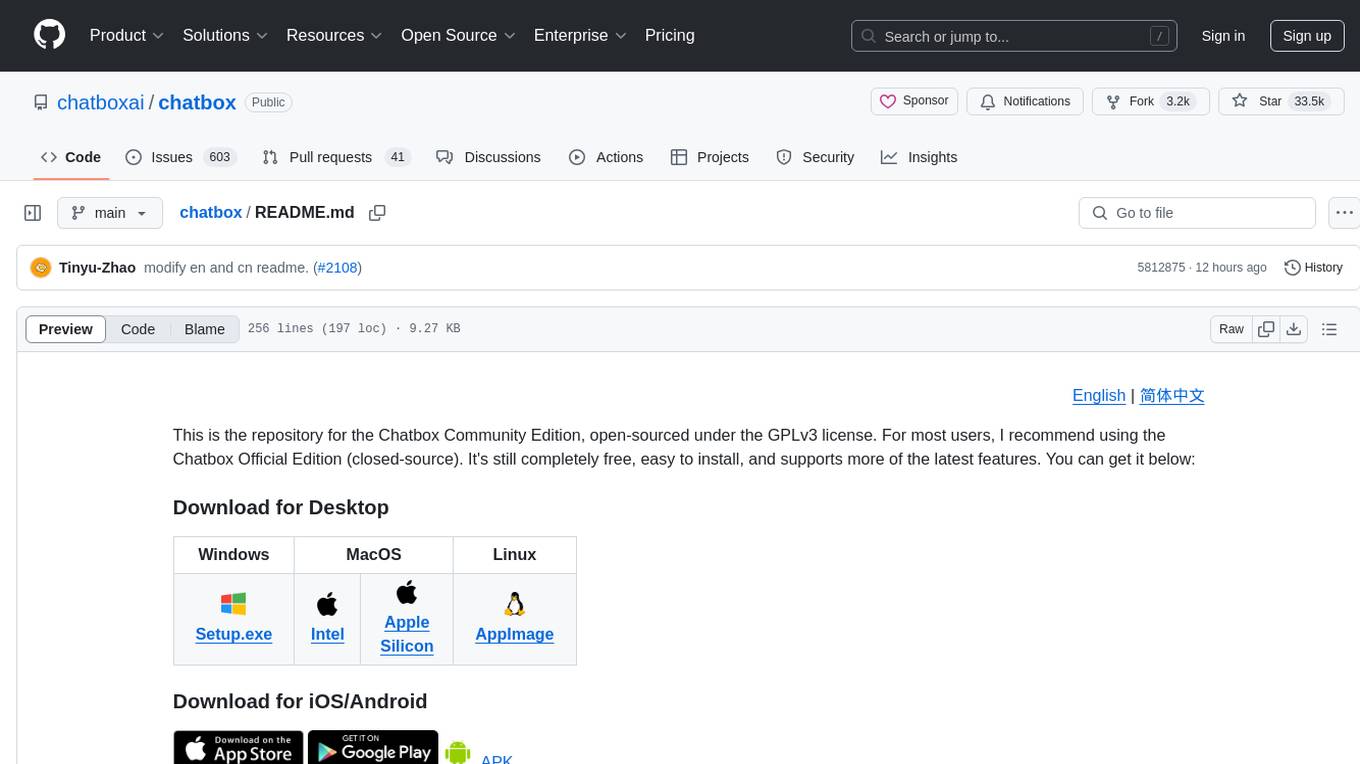
chatbox
Chatbox is a desktop client for ChatGPT, Claude, and other LLMs, providing features like local data storage, multiple LLM provider support, image generation, enhanced prompting, keyboard shortcuts, and more. It offers a user-friendly interface with dark theme, team collaboration, cross-platform availability, web version access, iOS & Android apps, multilingual support, and ongoing feature enhancements. Developed for prompt and API debugging, it has gained popularity for daily chatting and professional role-playing with AI assistance.
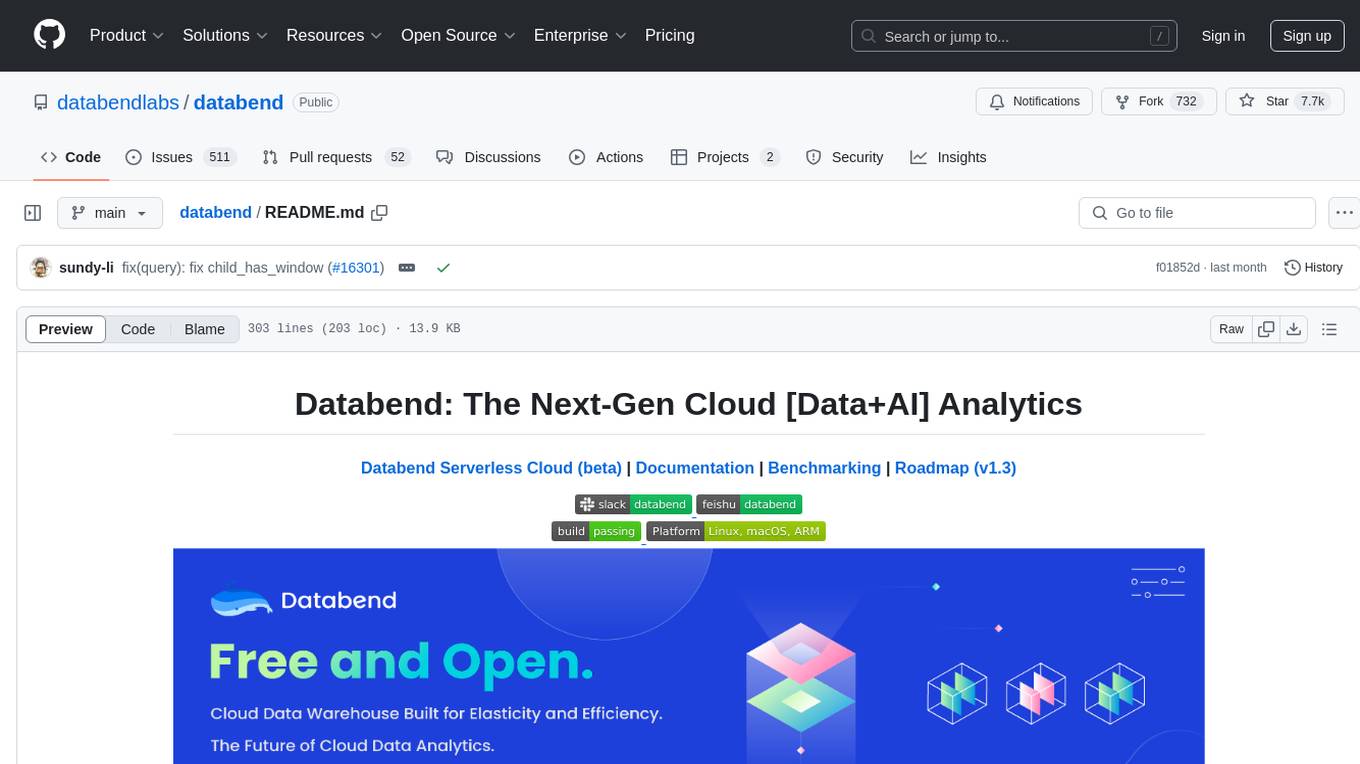
databend
Databend is an open-source cloud data warehouse built in Rust, offering fast query execution and data ingestion for complex analysis of large datasets. It integrates with major cloud platforms, provides high performance with AI-powered analytics, supports multiple data formats, ensures data integrity with ACID transactions, offers flexible indexing options, and features community-driven development. Users can try Databend through a serverless cloud or Docker installation, and perform tasks such as data import/export, querying semi-structured data, managing users/databases/tables, and utilizing AI functions.
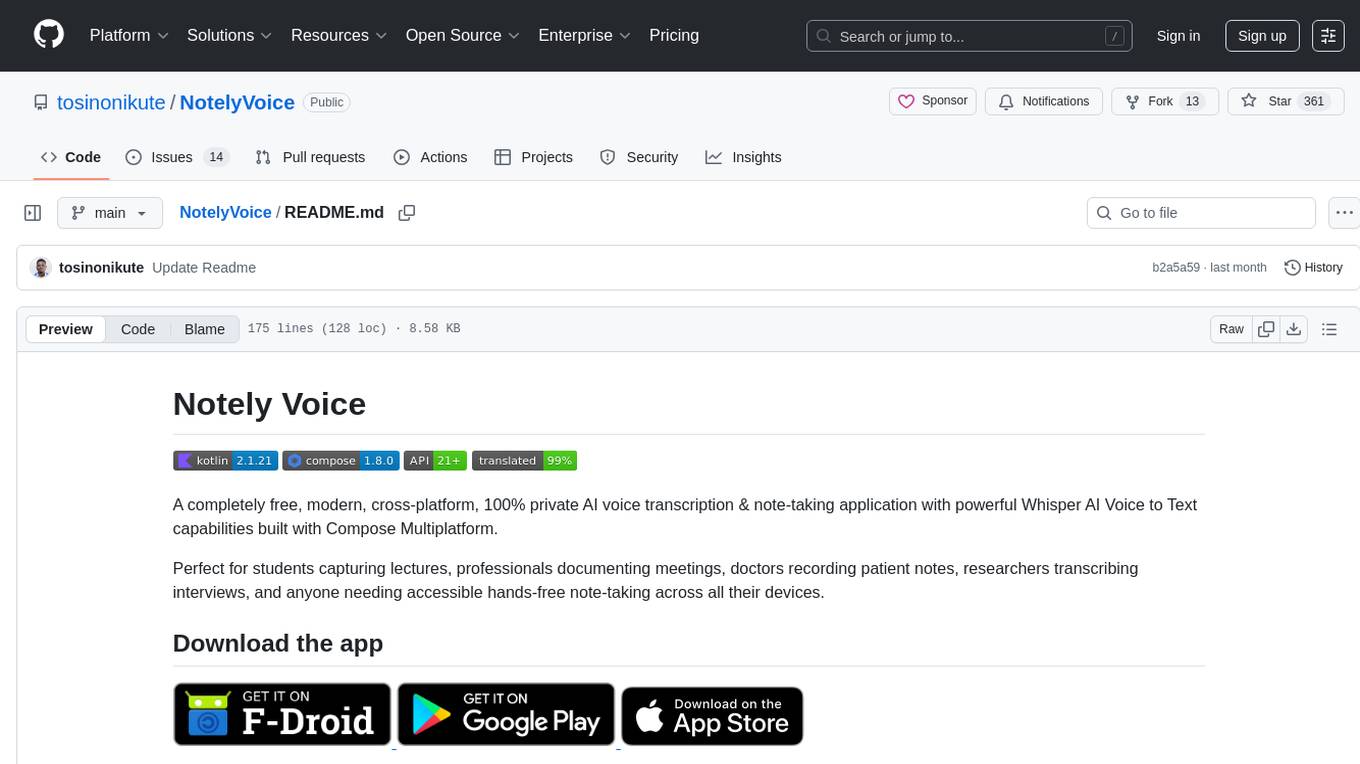
NotelyVoice
Notely Voice is a free, modern, cross-platform AI voice transcription and note-taking application. It offers powerful Whisper AI Voice to Text capabilities, making it ideal for students, professionals, doctors, researchers, and anyone in need of hands-free note-taking. The app features rich text editing, simple search, smart filtering, organization with folders and tags, advanced speech-to-text, offline capability, seamless integration, audio recording, theming, cross-platform support, and sharing functionality. It includes memory-efficient audio processing, chunking configuration, and utilizes OpenAI Whisper for speech recognition technology. Built with Kotlin, Compose Multiplatform, Coroutines, Android Architecture, ViewModel, Koin, Material 3, Whisper AI, and Native Compose Navigation, Notely follows Android Architecture principles with distinct layers for UI, presentation, domain, and data.
For similar tasks
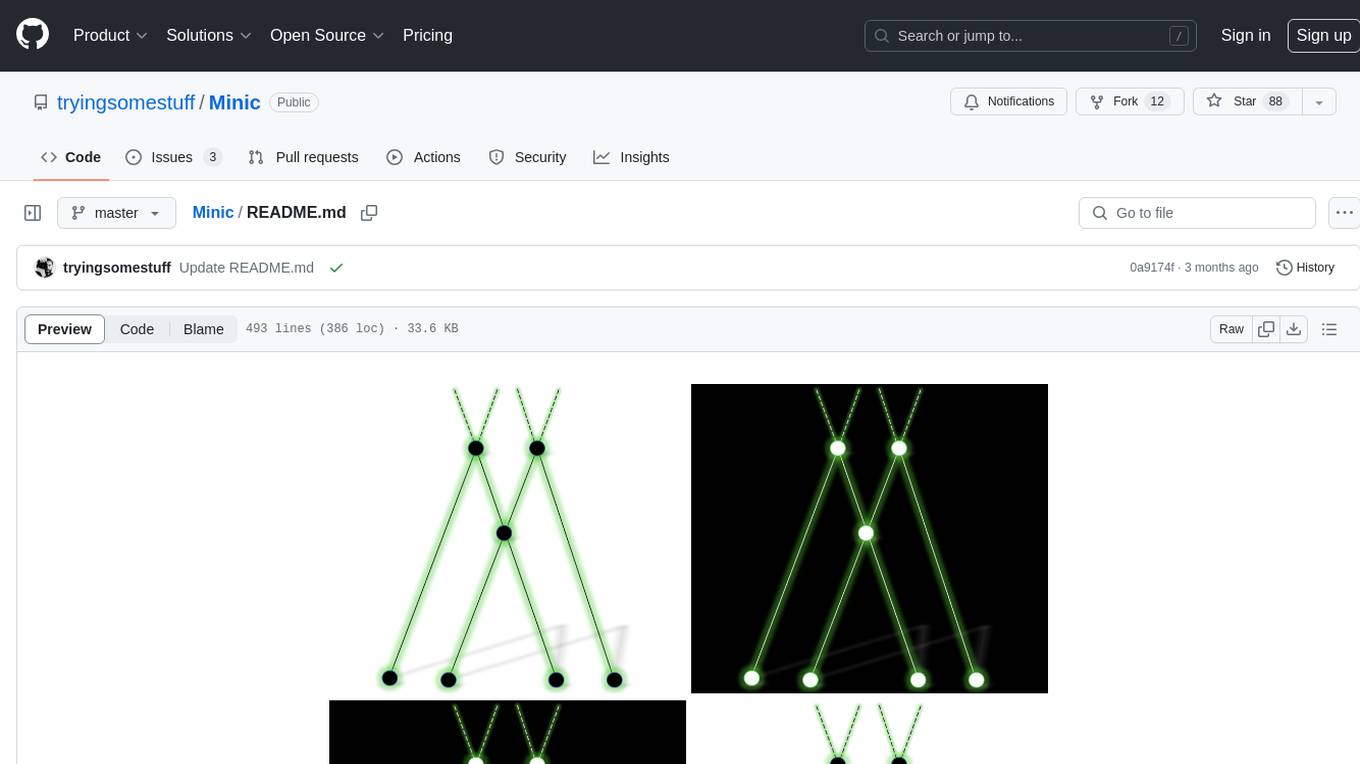
Minic
Minic is a chess engine developed for learning about chess programming and modern C++. It is compatible with CECP and UCI protocols, making it usable in various software. Minic has evolved from a one-file code to a more classic C++ style, incorporating features like evaluation tuning, perft, tests, and more. It has integrated NNUE frameworks from Stockfish and Seer implementations to enhance its strength. Minic is currently ranked among the top engines with an Elo rating around 3400 at CCRL scale.

Caissa
Caissa is a strong, UCI command-line chess engine optimized for regular chess, FRC, and DFRC. It features its own neural network trained with self-play games, supports various UCI options, and provides different EXE versions for different CPU architectures. The engine uses advanced search algorithms, neural network evaluation, and endgame tablebases. It offers outstanding performance in ultra-short games and is written in C++ with modules for backend, frontend, and utilities like neural network trainer and self-play data generator.
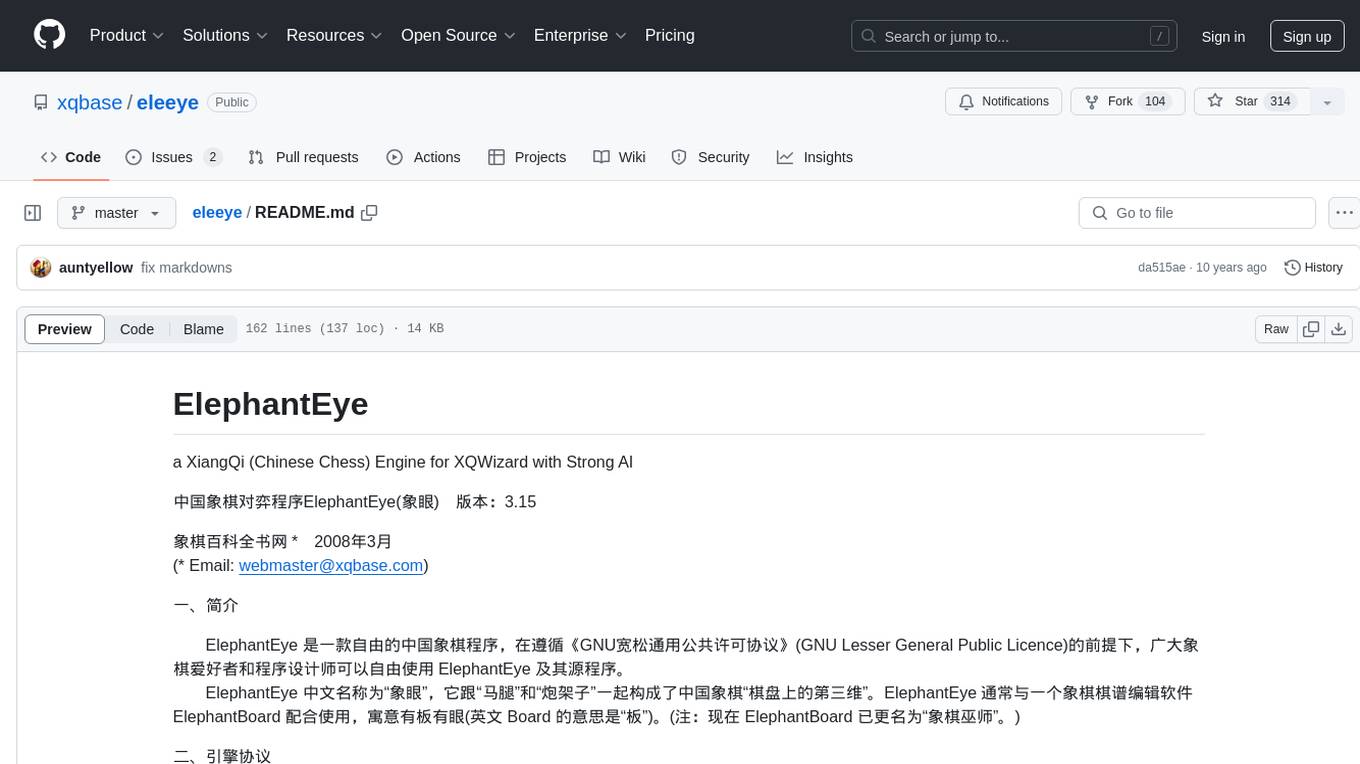
eleeye
ElephantEye is a free Chinese Chess program that follows the GNU Lesser General Public Licence. It is designed for chess enthusiasts and programmers to use freely. The program works as a XiangQi engine for XQWizard with strong AI capabilities. ElephantEye supports UCCI 3.0 protocol and offers various parameter settings for users to customize their experience. The program uses brute-force chess algorithms and static position evaluation techniques to search for optimal moves. ElephantEye has participated in computer chess competitions and has been tested on various online chess platforms. The source code of ElephantEye is available on SourceForge for developers to explore and improve.
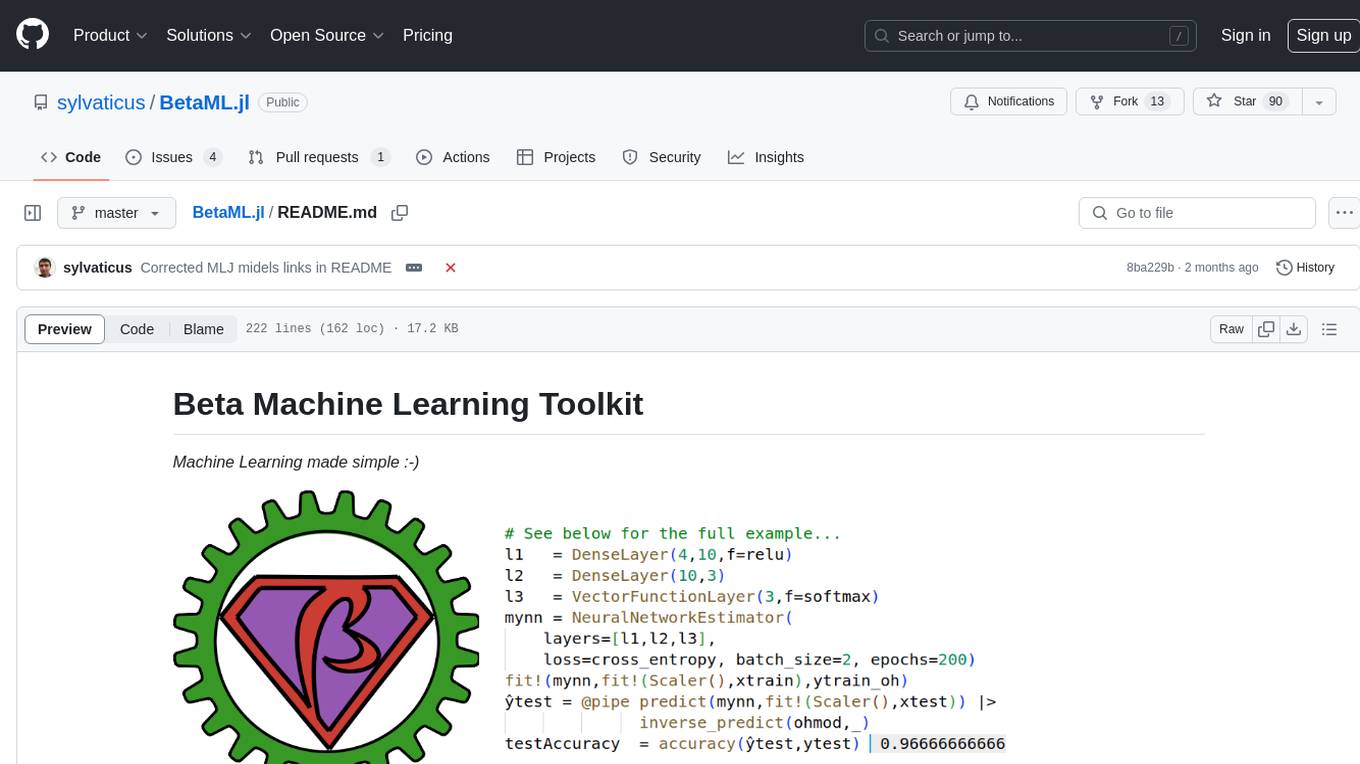
BetaML.jl
The Beta Machine Learning Toolkit is a package containing various algorithms and utilities for implementing machine learning workflows in multiple languages, including Julia, Python, and R. It offers a range of supervised and unsupervised models, data transformers, and assessment tools. The models are implemented entirely in Julia and are not wrappers for third-party models. Users can easily contribute new models or request implementations. The focus is on user-friendliness rather than computational efficiency, making it suitable for educational and research purposes.

nmed2024
Nmed2024 is a GitHub repository that contains code for a neural network model designed for medical image analysis. The repository includes scripts for training the model, as well as pre-trained weights for quick deployment. The model is specifically tailored for detecting abnormalities in medical images, such as tumors or fractures. It utilizes deep learning techniques to achieve high accuracy and can be easily integrated into existing medical imaging systems. Researchers and developers in the healthcare industry can leverage this tool to enhance the efficiency and accuracy of medical image analysis tasks.
For similar jobs

sweep
Sweep is an AI junior developer that turns bugs and feature requests into code changes. It automatically handles developer experience improvements like adding type hints and improving test coverage.

teams-ai
The Teams AI Library is a software development kit (SDK) that helps developers create bots that can interact with Teams and Microsoft 365 applications. It is built on top of the Bot Framework SDK and simplifies the process of developing bots that interact with Teams' artificial intelligence capabilities. The SDK is available for JavaScript/TypeScript, .NET, and Python.

ai-guide
This guide is dedicated to Large Language Models (LLMs) that you can run on your home computer. It assumes your PC is a lower-end, non-gaming setup.

classifai
Supercharge WordPress Content Workflows and Engagement with Artificial Intelligence. Tap into leading cloud-based services like OpenAI, Microsoft Azure AI, Google Gemini and IBM Watson to augment your WordPress-powered websites. Publish content faster while improving SEO performance and increasing audience engagement. ClassifAI integrates Artificial Intelligence and Machine Learning technologies to lighten your workload and eliminate tedious tasks, giving you more time to create original content that matters.

chatbot-ui
Chatbot UI is an open-source AI chat app that allows users to create and deploy their own AI chatbots. It is easy to use and can be customized to fit any need. Chatbot UI is perfect for businesses, developers, and anyone who wants to create a chatbot.

BricksLLM
BricksLLM is a cloud native AI gateway written in Go. Currently, it provides native support for OpenAI, Anthropic, Azure OpenAI and vLLM. BricksLLM aims to provide enterprise level infrastructure that can power any LLM production use cases. Here are some use cases for BricksLLM: * Set LLM usage limits for users on different pricing tiers * Track LLM usage on a per user and per organization basis * Block or redact requests containing PIIs * Improve LLM reliability with failovers, retries and caching * Distribute API keys with rate limits and cost limits for internal development/production use cases * Distribute API keys with rate limits and cost limits for students

uAgents
uAgents is a Python library developed by Fetch.ai that allows for the creation of autonomous AI agents. These agents can perform various tasks on a schedule or take action on various events. uAgents are easy to create and manage, and they are connected to a fast-growing network of other uAgents. They are also secure, with cryptographically secured messages and wallets.

griptape
Griptape is a modular Python framework for building AI-powered applications that securely connect to your enterprise data and APIs. It offers developers the ability to maintain control and flexibility at every step. Griptape's core components include Structures (Agents, Pipelines, and Workflows), Tasks, Tools, Memory (Conversation Memory, Task Memory, and Meta Memory), Drivers (Prompt and Embedding Drivers, Vector Store Drivers, Image Generation Drivers, Image Query Drivers, SQL Drivers, Web Scraper Drivers, and Conversation Memory Drivers), Engines (Query Engines, Extraction Engines, Summary Engines, Image Generation Engines, and Image Query Engines), and additional components (Rulesets, Loaders, Artifacts, Chunkers, and Tokenizers). Griptape enables developers to create AI-powered applications with ease and efficiency.
